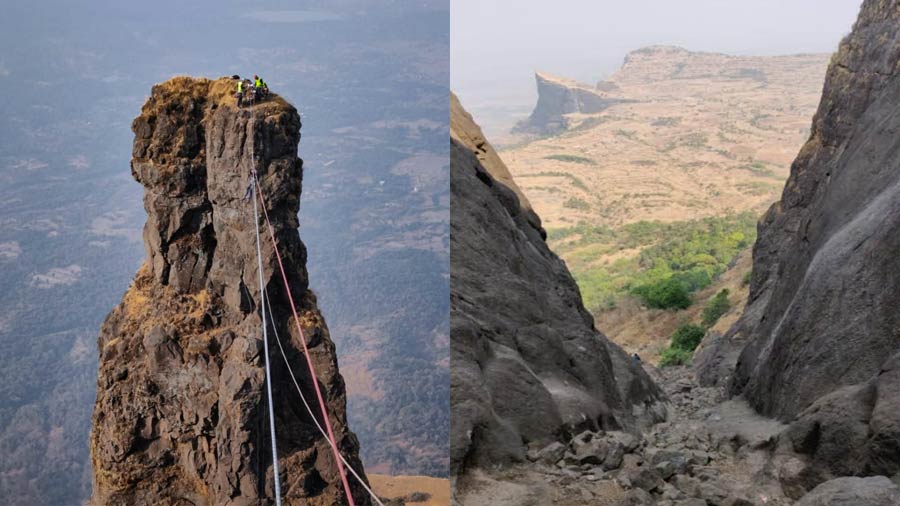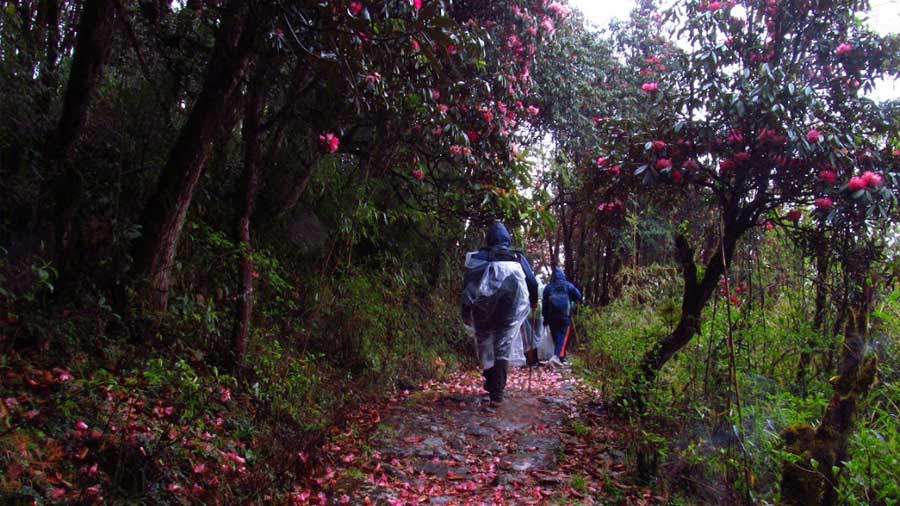Maharashtra is famous for its many hill and sea forts, and also for the many treks and thrills that they offer to all levels of mountain climbers.
Ghatghar’s Jivdhan Fort, standing at a height of about 3,755 feet above sea level, ranks among the five major climbs or treks in the state. It is not an easy trek, with tricky sections of the climb requiring a great deal of mountaineering experience to negotiate, but, the view that spans before your eyes at the summit is unbelievable and unforgettable by all counts.
A northward gaze from those lofty heights has a view of many other hilltops and forts. The lofty Sahyadri mountains and a large expanse of the Junnar plateau stretch out, and dotting the landscape are the famous forts of Harishchandragad, Chavand, Ratangad, Naneghat, Hadsar and Nimgiri. On a clear day, you can even see the Manikdoh Dam.
The first point of the trek is Naneghat, about 165 kilometres from Mumbai.
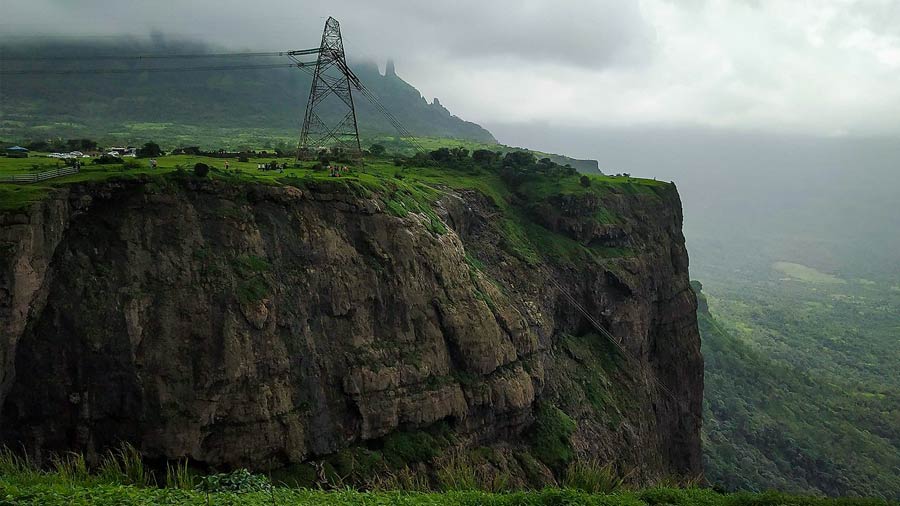
A monsoon-time view of Jivdhan Fort from Naneghat Wikimedia Commons
A history going back to Maharashtra’s first dynasty
The Jivdhan Fort can be traced back to Maharashtra’s first dynasty — the Satavahanas. The history goes back to the time when King Gautamiputra Satkarni destroyed the Sakas and established Satavahana dominance over the region by building trade passes and forts all across the Sahyadri’s mountainous areas. Naneghat served as an important pass, joining the sea to the mainland and was thus a major commercial point. The fortifications of Jivdhan offered protection to Naneghat.
At a later time, the last ruler of the Nizam Shahi dynasty, Murtaza Shah III, was held captive at Jivdhan until he was eventually freed by Chatrapati Shivaji Maharaj’s father, Shahaji Maharaj. Later, British colonialists captured the fort during the Anglo-Maratha Wars and destroyed most of the approaches as well large parts of the structure.
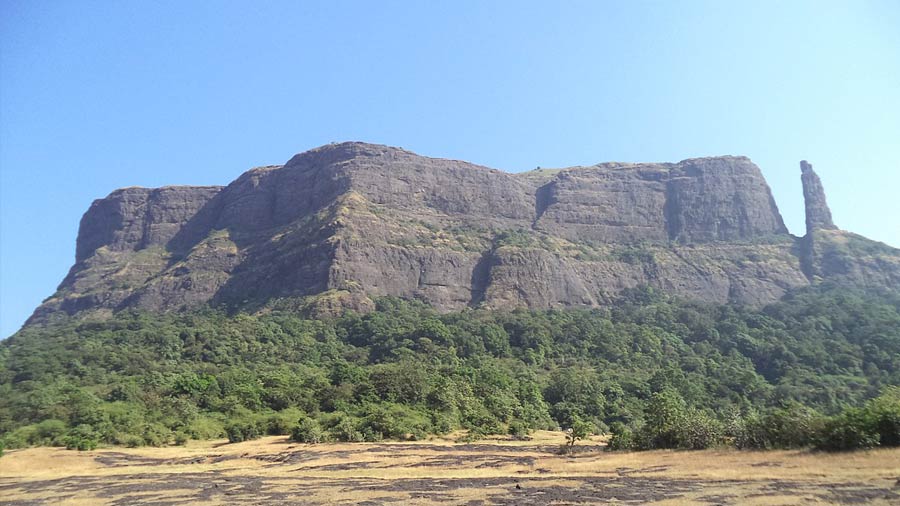
The structure of Jivdhan Fort that remains Wikimedia Commons
Historic ruins, daring climbs and breathtaking views
The climb to the fort is a tough one and can be attempted through the routes of Ghatghar and Naneghat. Of the two, the Naneghat trek requires a fair deal of experience as the journey meanders through forests that can be confusing to navigate for the uninitiated. Along the route, trekkers have a chance to spot the famous Indian giant squirrel, known as shekru in Maharashtra, one of the few giant squirrel species found in India.
Today, the trek to Jivdhan is made extra special for rock climbers because of an adjoining pinnacle called Vanarlingi, which stands on the northern side of the fort. The view from the top of the 385-foot-high rock formation is breathtaking. However, this part of the climb is only for experienced climbers as it requires specialised equipment. It’s an onerous climb, but standing at the top, it’s easy to imagine how an eagle views the earthly expanse below while soaring through the skies.
Though much of the fort was destroyed by the British, some storehouses and water tanks exist even today, along with ruins of the Jivaidevi Temple that gives the fort its name.

Journey through the forest along the trek Rohan Singh
Trek takeaways
Sharing his experience of the trek, rock-climbing enthusiast and IT professional, Rohan Singh, said that traces of explosives, from the destruction of the steps that were carried out by the British, can be seen even today. Describing the route, he shared, “after negotiating what is left of the rock-cut steps, one arrives at a steep edge beyond which only rock grooves lead the way ahead.”
The fort has two gates – Kalyan Darwaza that is reached from Naneghat and the Junnar Darwaza that comes on the road from Ghatghar. Built at right angles to the fortified steps and fortified with a bastion, the gates shield the fort from view even after arriving at the top of the stairs. “Once stretching over 65 acres, only the ruins of the fort are today visible,” said Singh. He described how there is also a square water tank and five others of varying sizes that you can spot on the way and at the top. The remnants of five granaries are discernible even today.
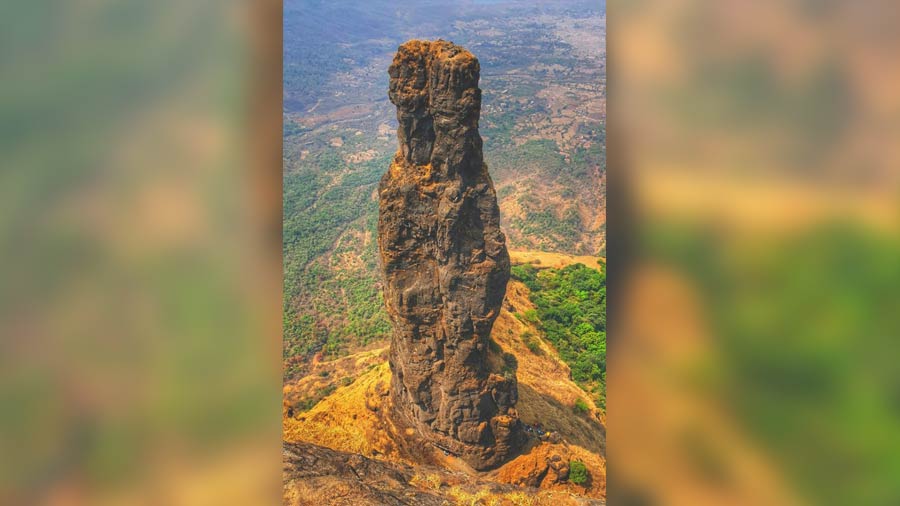
Vanarlingi pinnacle, the special attraction of the trek Rohan Singh
Singh had enough experience to scale Vanarlingi; the path to which is through a small break situated between the pinnacle and the fort wall. “Of course this is a hard trek, but what draws us all is the view from the top and also the thrill of scaling the pinnacle,” he said. The satisfaction it gives is hard to match, he adds. Singh went on the trek as a birthday event, and “this was undoubtedly my best gift ever,” he said.
Travel details:
- Jivdhan Fort is in Naneghat Wasti, Ghatghar, on Maharashtra’s NH 61, about 165km from Mumbai and about 30km from Pune-Junnar
- From Pune, arrive at Ghatghar and then make your way to Naneghat
- For any route, Kalyan railway station is a connecting point. Take a bus or take the route heading towards Malshej Ghat
- If you’re taking the bus, disembark at Tokawade village. There is local transport such as jeeps or auto rickshaws to take visitors to Naneghat
- Climbers must take precautions against beehives and thorny bushes that exist on the rocks and crevices all along the route
- Carry ample drinking water, there are no options for food and water at the top
